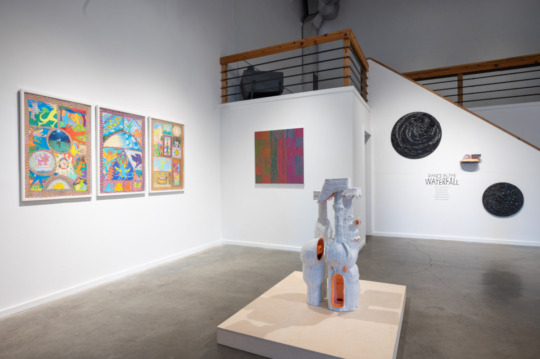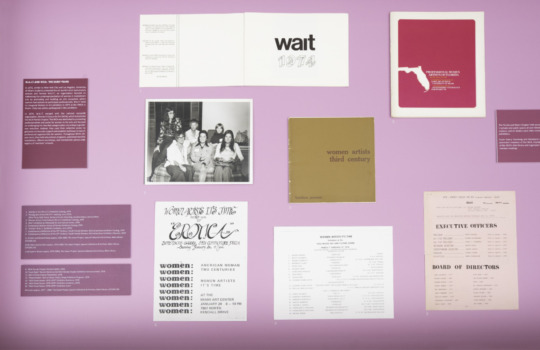
Dear BURNAWAY,
I’m a painter and I had a show in another state two months ago that was made up of many of the same pieces as the one I’m installing at a new gallery in a few weeks. Can/should I give it the same title? Or should I come up with something new since I’m showing some new work too? It’s not a proper traveling exhibition, but I’m stumped for a new title at the moment. Any thoughts?
Sincerely,
Tongue-Tied in Nashville
Dear Tongue-Tied,
Thank you so much for writing in with this question! I love that you’re being so thoughtful about the cohesion of your exhibitions and bodies of work. You’re trying to make sure you (and your audience) know where one series begins and the other one ends.
I think the answer here is pretty simple: I’d say yes, use the same title. If it’s generally the same body of work, plus or minus a few pieces, which in your case, it sounds like it is, then keep the title. Variations on a solo show are pretty common.
Titling is a quiet demon that few people think about until it comes time to name a show, work, or project. But whether we love them or hate them, titles are crucial. Not to put pressure on you, my sweet flower, but a title can make or break an exhibition. Or rather, a bad title won’t help anything, and a great title can propel the show to new heights. Allow me to demonstrate. There would be a big difference trying to marketing a museum show called “Portraits of Murderers in the 1930s” versus “Red Rum: Capturing Killers in the Great Depression.” The former is boring and factual, the other is titillating and bound to get more attention and incite intrigue from the public. (Not the best example, but you get the point.)
That’s plain old marketing. And it’s something the art world forgets about, and something many artists think doesn’t apply to them, but it does. Museums have notoriously boring exhibition titles, artists have notoriously boring exhibition titles. And that hurts us, as a whole. This exhibition title generator is so on point, it depresses me. Your title is your headline, your slogan, your catchy hook. So, make it sexy.

When you’re titling your show, put some serious thought in the punchiness of the words and the intrigue of what it suggests. It will put the very first framework around your art, and you should pay close attention to it. If you can’t think of something cool, go bug your friends about it. Ask them, and I guarantee they’ll throw out some titles that will, if nothing else, spark some new approaches in your mind.
Some titles have stayed with me long after the exhibition was over. I’ve loved titles as much as works, and sometimes, a great title has made me see the work through an entirely different poetic lens.
In 2009, I was in New York, walking the streets by myself bundled up in a oversized coat, and I ducked into a show at Stellan Holm Gallery on Madison Avenue. I lifted my watery eyes to see the title of the show: “The Sky is This as Paper Here, works by William S. Burroughs.” I instantly felt something happening inside me. The phrase was so beautiful, and I was such a fan of Burroughs already, that it made that frigid lonely day something entirely different for me. I perused his paintings, works on paper, and “shotgun” paintings with a certain kind of love, all because it was couched in such a crystallized title.

There have been others like that: “The Quick and the Dead,” a group show at the Walker Art Center; “At War with the Obvious,” William Eggleston’s show at the Met; “Dear Nemesis,” and the Nicole Eisenman retrospective at the Museum of Contemporary Art San Diego. Also, a few local ones come to mind: “Yesterday and All the Days After That,” a short art film by Matt Christy; and “Strong in the Broken Places,” a solo show by Jodi Hays.
All that to say, words hang around for a long time, so don’t underestimate your title’s importance.
Sara Estes is a writer and curator based in Nashville. She is the lead visual art writer at The Tennessean and an editor at Number, an independent arts journal of the South. She also works with David Lusk Gallery and Cumberland Art Conservation, and is co-founder of the gallery Threesquared. Her writing has also been featured in The Bitter Southerner, Nashville Scene, Nashville Arts Magazine, ArtsNash, ArtNow, and others. For more: saraestes.com.




